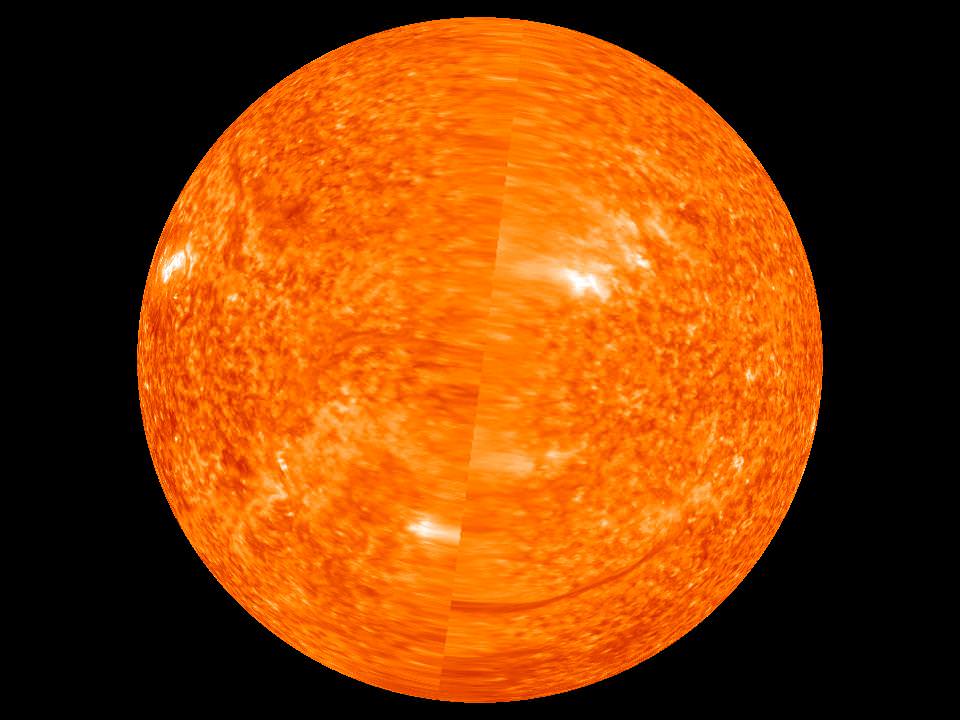[/caption]
Far out! This is the first complete image of the solar far side, the half of the sun invisible from Earth. Captured on June 1, 2011, the composite image was assembled from NASA's two Solar TErrestrial RElations Observatory (STEREO) spacecraft. STEREO-Ahead's data is shown on the left half of image and STEREO-Behind's data on the right.
You may recall that the two STEREO spacecraft reached opposition (180 degree separation) on February 6 of this year and the
science team released a "complete" 360 degree view of the Sun.
However, a small part of the sun was inaccessible to their combined view until June 1. This image represents the first day when the entire far side could be seen.
The image is aligned so that solar north is directly up. The seam between the two images is inclined because the plane of Earth's - and STEREO's - orbit, known as the "ecliptic", is inclined with respect to the sun's axis of rotation. The data was collected by STEREO's Extreme Ultraviolet Imagers in the SECCHI instrument suites.
The video below explains why seeing the entire Sun is helpful to scientists:
Source:
PhysOrg
 Universe Today
Universe Today
